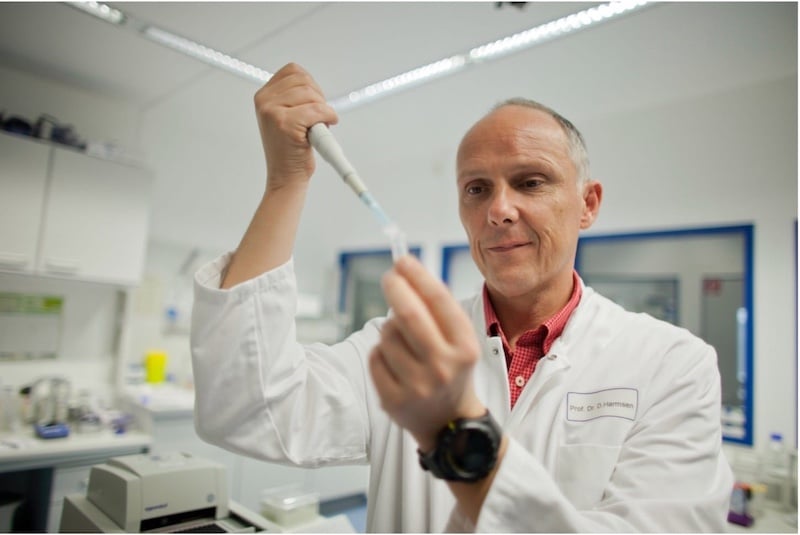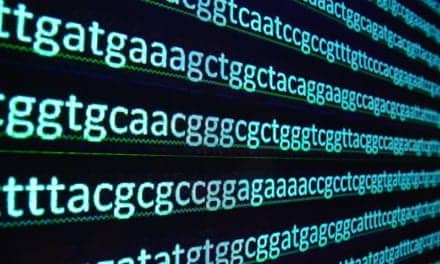One-sentence summary:
Bruker announced an expansion into next-generation sequencing (NGS) applications for microbiology and hospital-acquired infection tracing through a strategic collaboration with Ridom GmbH and its bioinformatics platform SeqSphere+.
Three brief takeaways:
- NGS Expansion: Bruker is integrating NGS-based tools for deeper genomic analysis in epidemiology and hospital hygiene applications.
- Strategic Partnership: Bruker has partnered with Ridom GmbH to enhance its microbiology solutions with the SeqSphere+ software for detailed bacterial strain and resistance tracking.
- Complementary Workflow: The combined use of IR Biotyper, MALDI Biotyper, and SeqSphere+ enables a tiered testing approach, from rapid microbial ID to in-depth genomic analysis.
At the recent ESCMID Global 2025 conference, Bruker´s Microbiology and Infection Diagnostics division announced the expansion of its microbiology solutions into next-generation sequencing (NGS) applications, with new, research-use only NGS-based solutions in epidemiology and hospital acquired infection (HAI) tracing.
Bruker has entered into a strategic collaboration for NGS bioinformatics applications in microbiology and infectious disease testing with Ridom GmbH, based in Muenster, Germany. Ridom´s NGS bioinformatics software SeqSphere+ is designed for genomic bacterial strain differentiation, multilocus sequence typing (MLST), core genome MLST (cgMLST), phylogenetic analysis, and real-time clonal and plasmid transmission detection. SeqSphere+ can handle data from various NGS instrument platforms. Ridom is profitable, and financial details of the investment were not disclosed.
“We are delighted to become an important part of Bruker´s Microbiology & Infection Diagnostics solutions. Bruker has a track record of bringing innovation to microbiology, and our new strategic collaboration ensures sustainable service for our NGS customers, and creates new opportunities for our significant growth as part of Bruker´s global microbiology team,” says Professor Dag Harmsen, the founder and managing director of Ridom.
NGS Reflex Testing Gets New Capabilities
The new genomic analysis capabilities are immediately beneficial in hospital hygiene and epidemiological analysis by combining complementary, rapid first-line testing with the cost-effective, short time-to-result IR Biotyper for the detection and rule-out of HAI outbreaks, followed by reflex testing on selected samples by NGS for in-depth phylogenetic analysis. Similarly, important samples can be sequenced after species identification with the MALDI Biotyper to gain genomic insights.
“At our laboratories, we have been working with Ridom’s SeqSphere+ software and the Bruker MALDI Biotyper for many years. I am excited about potential synergies between fast microbial identification and in-depth genomic information in order to provide, for example, further insights into the spreading of antibiotic resistances,” says John Rossen, professor of Personalized Molecular Microbiology in the Department of Medical Microbiology and Infection Control at the University of Groningen and Isala Hospital Zwolle, The Netherlands
Dr. Wolfgang Pusch, President of Bruker´s Microbiology & Infection Diagnostics Division, adds: “Since the introduction of our MALDI Biotyper for fast, near-universal microbial identification from cultures, we are committed to bringing innovations to microbiology. The novel, research-use only combination of our IR Biotyper for rapid, cost-effective and strain-specific detection or rule-out of hospital outbreaks, in combination with NGS reflex testing for genomic interpretation with SeqSphere+, provides a unique triage offering for epidemiology and healthcare acquired infection tracing.”
Featured Image: Professor Dag Harmsen, Managing Director of Ridom GmbH. Image: Bruker





